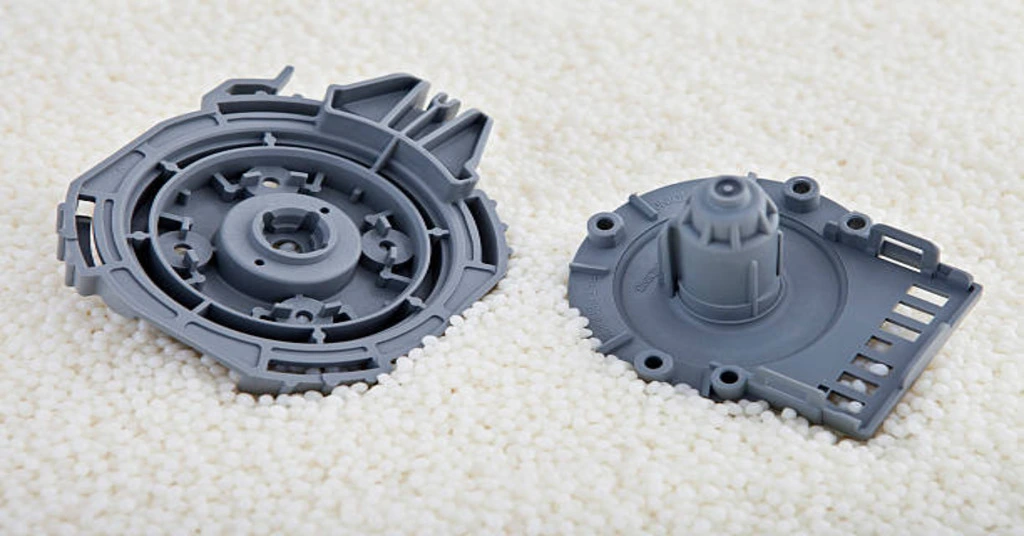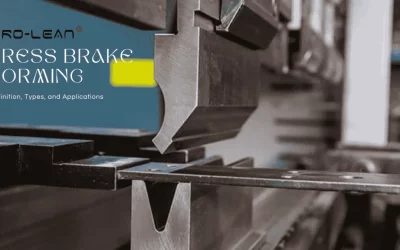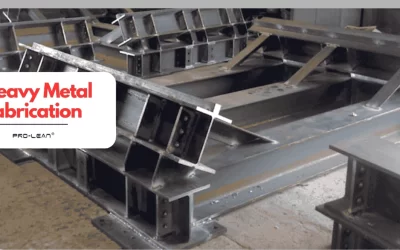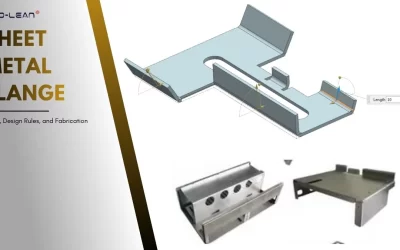
Plastics are known for flexibility, toughness, and ability to create the final product of plastics. There are several production techniques, and out of all the methods, extrusion is highly favored for full-scale, high-volume production of parts, especially those in the form of profiles such as pipes and tubes. Plastic extrusion has been in industrial practices for over a hundred years. It has evolved a long way and is today one of the most favored processes in the production of plastics due to factors such as simplicity, time-saving, and accuracy.
This guide is concerned with the process of plastic extrusion, the advantages and disadvantages of the process, and the categories and industries that apply this method.
An Overview To Plastic Extrusion Process

Extrusion is a high-production method for producing long parts with uniform cross-sectional profiles. This method involves heating thermoplastic materials to their melting point and then using pressure to force the plastic through a die. The combination of a rotating screw inside a barrel produces the pressure. When the plastic is melted, it is squeezed through the die and comes out as a single piece in the die shape, known as an extrudate. The extrudate is then cooled and solidified through cooling rolls or water baths.
Plastic extrusion offers versatility and can create tubes, pipes, sheets, profiles, films, and custom shapes. The equipment applied in plastic extrusion includes several significant parts that enable the manufacturing of plastic parts on a large scale. Some components are a feed pipe/adapter, feed throat, hopper, breaker plate, die, barrel, and cooling system. All of them are crucial in melting the plastic material, molding it into the right shape, and then cooling it to the required state.
How Does Plastic Extrusion Work: Steps Involved
Here are the critical steps involved in the plastic extrusion process.
Preparation of Raw Materials
The first process is preparing the raw material, which is the plastic beads or pellets used in the extrusion process. These coloring agents are blended and added to virgin polymers before the extrusion process to attain thorough color in the article.
Initiation of the Extrusion Process
In the extrusion process, the mixed plastic materials are compelled to enter into an opening of the extruder cavity. A screw system is adopted for the movement of the material through the cavity, and it does not impart shock to the plastic materials.
Melting at High Temperatures
As mentioned before, within the cavity, the temperature is 400°F (200°C) and above. This high temperature melts the plastic, which changes it from a solid state to a liquid state.
Filtration of Contaminants
Since the final extruded plastic cannot contain any impurities, the molten plastic is sieved where any impurities are sieved and purified.
Shaping the Profile
The molten plastic is then purified and passed through a die, vital for shaping or profiling the plastic. It also explains various types of extruded plastic and the different types of profiles.
Cooling and Finishing
The other activity performed on the extruded plastic is the cooling process once the shaping process has been done. It is then cooled and cut to the desired length or spooled or coiled, making up the extrusion process.
Final Product
These steps result in many uses of a new individual channel, profile, or tube.
Types of Plastic Extrusion Processes
In plastic extrusion, various processes are used based on the application, the type of material used, and the final product to be produced. However, all the processes adhere to general procedures. Therefore, the choice of process is mainly dictated by the shape and design of the die. Some types are more appropriate for intricate designs than others are. Here are the four major types of plastic extrusion processes used in the industry today:
- Tubing Extrusion
Tubing extrusion, as the name implies, is ideal for producing tubes and hollow goods such as pipes and medical tubes. This process is like the usual extrusion process until the die section. A mandrel or pin is inserted in the die to form the hollow sections’ internal shapes, and positive pressure is applied through the pin. Where there are many holes, plastic extrusion manufacturers use more than one pin at the center of the die. The air pressure for each pin can be adjusted to set the size of each hole the tool makes.
- Blow-Film Extrusion
Blow-film extrusion is another standard process. It’s applied in the production of items like shopping bags. This method is quite similar to the normal extrusion process. The only difference is that the die is an upright cylinder with a circular hole. This die has molten plastic pulled through by nip rolls that may be placed at various heights based on the cooling. An air ring is incorporated around the die to assist in cooling the film. High-pressure air is supplied at the center of the extruded plastic profile to form a bubble, enlarging the plastic’s cross-sectional area. This bubble is then flattened by nip and rolls into a double-layer film. It can be cut into strips, wound into a coil, or printed.
- Sheet Film Extrusion
Blow-film extrusion is like sheet film extrusion but concentrates more on creating tubular products. Subsequently, the material is pulled and rolled to the desired thinness and surface texture after the extrusion process. It also aids in cooling and solidifying the material, and the rolling process is completed in several passes.
- Over-Jacketing Extrusion
Over-jacketing extrusion is another technique widely used to apply a plastic jacket to a wire. There are two main types of tooling for this process: Pressure tooling and jacket tooling. The use of tooling depends on the degree of interaction between the plastic and the wire. Pressure tooling is used where the tool has to come in contact with the workpiece, while jacketing tooling is employed where the tool does not come in contact with the workpiece. In pressure tooling, the pin ends inside the crosshead so the molten plastic can cover the wire inside the die. In jacketing tooling, the pin moves up to the face of the die to cover the wire as it comes out.
Common Plastic Extrusion Materials
Below are some of the most common plastics that are extruded:
Polyethylene (PE)
Polyethylene has some of the best qualities, including flexibility, durability, and chemical resistance. This thermoplastic has been used in films for packaging, pipes, and containers due to its good build-up of color, strength, and low-temperature characteristics.
Polypropylene (PP)
Properties of polypropylene include chemical resistance and versatility. This thermoplastic is robust and has excellent abrasion resistance; it is available in numerous tints and used in packaging, automotive applications, textiles, and much more. It also has good low-temperature properties.
Polyvinyl Chloride (PVC)
Polyvinyl chloride is one of the most utilized and least expensive thermoplastics with high mechanical characteristics. It comes in two types: as well as the characteristics of rigidity and flexibility. Rigid PVC also does not bend to impact or UV radiation, making it optimal for use in pipes, windows, and doors. SAR flexible PVC is economical, versatile, and used in cable jackets and flooring. These properties suggest that this material is not very susceptible to the weather, has a reasonably good tear strength, and is quite tensile.
Polystyrene (PS)
Polystyrene is a lightweight, very brittle thermoplastic that finds application in packaging, disposable cutlery, and insulation. It is used in such applications due to its ease of use and efficiency.
Acrylonitrile Butadiene Styrene (ABS)
ABS is a thermoplastic that is very hard and shock-resistant and is synthesized from styrene and acrylonitrile with polybutadiene. The styrene gives it a shiny, waterproof surface, while the polybutadiene makes it strong and works well in different temperatures. ABS is robust and has a nice look, so it is used for car elements, toys, and electronics. Laser marking plastic is a popular technique used to label ABS products due to their durability and aesthetic appeal.
Polyamide (PA or Nylon)
Nylon is a high-performance thermoplastic with good mechanical properties of polymer material. It is commonly applied in automotive industries, producing industrial parts and textiles because of its mechanical properties.
Polycarbonate (PC)
Polycarbonate is a thermoplastic material with good impact strength and high light transmission. This material is valued for its rigidity, the state of wearing it, and its characteristics in high and low temperatures. It is applied in producing car accessories and the casing of gadgets, among other uses.
Polyethylene Terephthalate (PET)
PET is used extensively in packaging, mainly beverages and food products. It is also used in textile fibers and innumerable engineering applications because it is solid and rigid.
These materials are selected depending on the environment the extrusion process will likely encounter and the product’s ultimate use.
Try Prolean Now!
Applications of Plastic Extrusion
Plastic extrusion applications are widespread in many industries and areas. Here are some of the major applications:
Wire Insulation
Plastics are good insulators, and because of this, they can easily be used to cover live wires since they are flexible. Most wires with plastic covering use silicone extrusion since it is a solid cable application method.
Pipes and Tubes
The largest category of products made by extrusion of plastics are pipes and tubes. This process is used to manufacture pipes and tubes that constitute a significant proportion of the market, and this is done with the help of comparatively simple dies.
Windows and Doors
Plastic extrusion enhances the strength of windows and doors, mainly if the material is PVC because UV light does not affect it. This makes the extruded plastic windows and doors solid and able to withstand the vagaries of the weather.
Blinds and Shades
Blinds and shades are another significant application of plastic extrusion and are very popular in homes and offices. For example, the natural appearance of many blinds, especially wood ones, has a polystyrene base produced through the extrusion process.
Weatherstripping
Among the weatherstripping components, the draft excluders are some of the parts that are made from plastic extrusion. These products are meant to be fitted closely to the door and window frames to keep fresh air from entering. Forming a seal with rubber materials is more accessible, so they are used for weatherstripping.
Windshield Wipers and Squeegees
The windshield wipers are primarily manufactured through the extrusion processes. The extrusion material is commonly EPDM or a combination of synthetic and natural rubber through co-extrusion. Similarly, manual squeegees are made from extruded rubber to enable easy wiping off of water from the surface.
Advantages and Disadvantages of Plastic Extrusion
As can be analyzed from the discussion above, the plastic extrusion process has several benefits, but it also has some disadvantages. Here’s a look at both:
Advantages
- Post-Extrusion Manipulation: The plastic material is still reasonably soft even after the extrusion and before the actual solidification process to enable the manufacturer to produce the best quality products.
- Cost-Effective: Extrusion is economical compared to other plastics manufacturing techniques because it does not require much tooling.
- Flexibility: In plastic extrusion, a lot of flexibility can be achieved when the cross-section is uniform; thus, it is possible to develop complicated shapes without changing the cross-section.
Disadvantages
- Dimensional Changes: The final product dimensions are slightly larger than the original dimensions because, after extrusion, the hot plastic expands. As for the impact of the business size, it is rather challenging to forecast how it will be influenced.
- Product Limitations: The flexibility of the extrusion process is limited when it comes to the products that can be manufactured. The manufacture of various products would call for the acquisition of new extrusion equipment.
Plastic Extrusion vs. Injection Molding
Both plastic extrusion and injection molding are essential for manufacturing plastic products. Still, they have distinct differences:
- Dimensional Focus: Plastic extrusion is used when the product is flat, while injection molding is used when the product is more three-dimensional.
- Shaping Process: In extrusion, the shape of the final product is that of the die used in the process, while in injection molding, the shape of the material is that of the mold.
- Cross-Section Production: Extrusion can create simple cross-sections of products with a lot of ease, but the die is complicated when creating cross-sections of products in injection molding.
- Strength and Cost: In most cases, injection-molded products are superior in strength to extruded products. However, injection molding is slightly expensive due to the cost of the dies, although it is more efficient.
Read more: What Is Plastic Fabrication: How It Works? Types, & Benefits
Plastic Extrusion vs. Aluminum Extrusion
Extrusion is a technique that can be applied to both plastics and metals, although the two are used in different ways. Plastic extrusion is the process of manufacturing continuous profiles of thermoplastics, while aluminum extrusion is the process of manufacturing metal parts. The reason for using aluminum extrusion is because of the following factors: low density, high thermal and electrical conductivity, and recyclability. Aluminum profiles are widely used in bars, tubes, wires, pipes, fences, tracks, frames, heat sinks, etc.
Aluminum can be extruded hot or cold; the choice depends on the type of aluminum used and the final product. Hot extrusion is done at 3500C to 5000C, while cold extrusion is done at room temperature. For more information on aluminum extrusion, please visit the website.
Material Selection for Plastic Extrusion
The suitable material for the plastic extrusion is crucial if the end product is valuable and durable. This is because manufacturability and cost are very sensitive to the decision of the material to be employed. The first criterion in selecting the plastic resin is to establish what properties your part needs to perform in the application that the part will be used. Since different plastics exhibit varying properties, consider the following factors: Because the properties of the different plastics are different the following factors should be considered:
- Environmental Resistance: Its heat and cold resistance, UV, and other forms of weather resistance.
- Rigidity/Flexibility: The extent to which the part has to be flexible or stiff.
- Impact Resistance and Strength: The ability of the material to withstand impact loads and distribute them and the ability of the material to maintain its shape and strength.
- Aesthetic Appeal: The final process requires the finish and feel of the last product.
In this regard, materials that are not extraordinary and very expensive, even if they meet the requirements but are typical for construction, should be chosen to control costs. Once the various types of plastic resins have been defined, then it will be easier to make a decision on which of the plastic resins to use. The specialists at Prolean Tech can also provide suggestions on the material and filler that can be used for your project and answer any questions you might have.
Wrapping Up The Things
Plastic Extrusion is a significant process with some design and application features and includes sheets, films, coatings, pipes, and tubes. For the best results, it is recommended that one hire experienced companies like Prolean Tech to manufacture plastics. Prolean Tech is a premier company that offers services in the fabrication of plastics, and we are better at design and optimization through better machinery and experienced staff. You can contact Prolean Tech for a quote if you need reliable and cheap extrusion services to start your project.
FAQs
Q1. What materials can be used in weatherstripping?
Weatherstripping is usually made from rubber or synthetic material, which is utilized to seal gaps around doors and windows.
Q2. How are car accessories such as windshield wipers manufactured?
Windshield wipers are customarily manufactured through the extrusion process with synthetic rubber or a blend of artificial and natural rubber.
Q3. What are the general benefits of aluminum extrusion?
Aluminum extrusion is lightweight, highly conductivity, and recyclable; thus, it is ideal for various applications in numerous industries.
Q4. What is the difference between hot and cold aluminum extrusion?
Hot extrusion requires 350-500°C to produce pipes, rods, and aluminum profiles. Cold extrusion, done at room temperature, manufactures items like gears, fasteners, and tubing.
Q5. Is it possible for Prolean Tech to accept a small order for plastic extrusion?
Prolean Tech is a low-volume custom plastic extruder company offering prototyping and short-run production.




What an insightful article on Plastic extrusion process & products! Your ability to break down complex topics into easily understandable points is truly commendable. I appreciate the thorough research and the engaging writing style that keeps readers hooked from start to finish. . Thank you for sharing details on extrusion.
Thank you! We are glad that you find this informative and solves your manufacturing questions.
This article offers a fascinating perspective on the plastic extrusion. The depth of research and clarity in presentation make it a valuable for me as i am interested in manufacturing!
I’m interested in the customization options offered by your company ! I need some unique extruded plastic prototypes
Sure! we offer custom plastic extrusion! We are excited to collaborate with your project, please contact us via any medium or through get a quote section